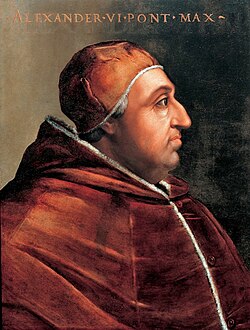User:Allard
Hello and a warm welcome to all my fellow Wikipedians. How nice of you to drop in to see who I am!
Morning>
Wikipedia & me:
[edit]How I discovered Wikipedia, I do not remember. But from being a reader I slowly became a contributor. Although I don't work that much on Wikipedia I do see myself as a Wikipedian. I don't go searching on Wikipedia what I can edit next, I edit what I find and want to do. This means I add and mainly improve a lot of small things and only rarely I make large edits.
My work:
[edit]Articles I've started on Wikipedia:
- Fort Knox Bullion Depository
- Animals are Beautiful People
- Template:David Attenborough Television Series
- Template:Malta Islands
Images I made for Wikipedia:
 Dutch lower house as from 2006
Dutch lower house as from 2006 New image of the Netherlands Air Force Roundel
New image of the Netherlands Air Force RoundelMap on membership of the League of Nations
United Nations membership map
 Improved image of the British Helgoland flag
Improved image of the British Helgoland flag New image showing the current flag of Hel(i)goland
New image showing the current flag of Hel(i)goland
Article guide:
[edit]A list of articles worth looking at, if one can find them:
- Antidisestablishmentarianism
- Ball's Pyramid
- British Isles (terminology)
- Eadweard Muybridge
- Gunpowder Plot
- Horace de Vere Cole
- Humphrey (cat)
- Islomania
- List of countries by date of nationhood
- List of flags
- List of people who died on their birthdays
- List of regnal numerals of future British monarchs
- List of unusual deaths
- Northwest Angle
- Quadripoint
- Racetrack Playa
- Rule of tincture
- San Gimignano
- Transcontinental country
- Undivided India & Partition of India
- Voyager Golden Record
- Web colors
- Winchester Mystery House
And there's always the Random article
And to all citizens of the European Union, please read this: Oneseat.eu
News
[edit]- The Australian Labor Party, led by Prime Minister Anthony Albanese (pictured), wins a majority in the federal election.
- In Trinidad and Tobago, the United National Congress wins a majority in the general election.
- In Canada, the Liberal Party wins the most seats in the federal election.
- A power outage affects most of the Iberian Peninsula.
- An explosion and fire at the Port of Shahid Rajaee, Iran, kills at least 70 people and injures more than 1,200 others.
Selected anniversaries
[edit]May 4: Youth Day in China; Literary Day in Taiwan; Star Wars Day
- 1493 – Pope Alexander VI (pictured) issued the papal bull Inter caetera, establishing a line of demarcation dividing the New World between Spain and Portugal.
- 1776 – American Revolution: The Colony of Rhode Island and Providence Plantations became the first of the Thirteen Colonies to renounce its allegiance to the British Crown.
- 1942 – World War II: Aircraft from Imperial Japanese Navy vessels attacked Allied naval forces, beginning the Battle of the Coral Sea, the first naval action in which the participating ships never sighted or fired directly at each other.
- 1974 – An all-female Japanese team reached the summit of Manaslu in the Himalayas, becoming the first women to climb a peak higher than 8,000 metres (26,247 ft) above sea level.
- 1979 – Margaret Thatcher became the first female prime minister of the United Kingdom.
- John Nevison (d. 1684)
- Nettie Stevens (d. 1912)
- Audrey Hepburn (b. 1929)
Did you know...
[edit]- ... that temperance movement activist T. D. Bancroft (pictured) witnessed Abraham Lincoln's assassination and lectured about it across America?
- ... that a reviewer praised At Hope's Ravine by saying that singer Pat Hynes sounds "like he's being unbearably tortured whilst holding a pneumatic drill"?
- ... that Carlos Baxter was erroneously given 130 votes meant for his brother during the 1860 U.S. House of Representatives election?
- ... that during the Spanish Civil War, when the government fled the coming siege of Madrid, the Rosal Column detained several government ministers and accused them of cowardice?
- ... that Almeda Lambert provided detailed instructions for creating homemade meat substitutes, such as "Nutora" and "Nutmeato"?
- ... that Tao Asian Bistro was used by The New York Times to test new conversation-boosting features in Apple's AirPods Pro?
- ... that runner Mirsada Burić survived a concentration camp, an attempted rape, and snipers' bullets before she competed at the 1992 Olympics?
- ... that a former U.S. president helped dedicate the United Engineering Center, and a future U.S. president demolished it?
- ... that former governor of Jakarta Sutiyoso has a museum dedicated to himself in his backyard?
Today's featured article
[edit]Hualca Hualca is a 6,025-metre-high (19,767 ft) extinct volcano in the Andes of southern Peru. It is part of the Peruvian segment of the Central Volcanic Zone, one of several volcanic belts in the Andes. It lies about 70 kilometres (43 mi) northwest of Arequipa and is part of a north–south chain that includes the volcanoes Ampato and Sabancaya, the last of which has been historically active. Hualca Hualca features a wide amphitheatre-like structure on the northern flank, which was created by a gigantic landslide during the Pleistocene. After the collapse, renewed volcanic activity built a new summit and several lava dome complexes within the collapse scar. After the cessation of volcanic activity, glaciers eroded the volcano and formed multiple moraines. The present-day volcano is covered by glaciers, and during the Last Glacial Maximum, glaciers advanced to low altitudes. There are hot springs and geysers north of the mountain, and the magma chambers of Sabancaya are located below Hualca Hualca. (Full article...)











